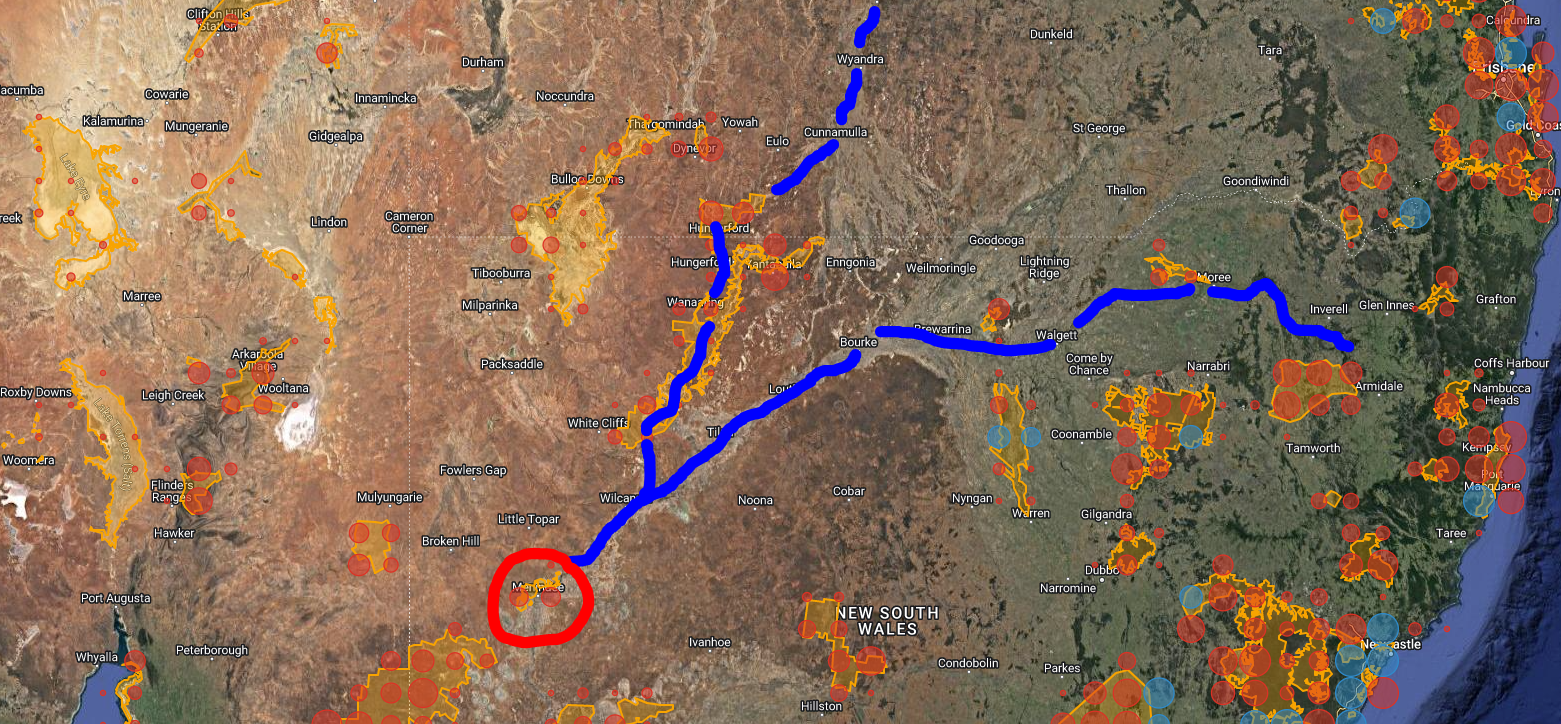Menindee Lakes KBA – In Danger and choking to death
By Amanda Lilleyman
“The worst mass fish kill ever to hit the region”
The KBA team is heartbroken to hear about the devastating mass fish kill in the Menindee region of far west NSW. This is the second time the region has had a mass fish kill due to the starvation of oxygen in the river and lake system, from heatwaves, receding floodwaters and abundant bacteria.
The Menindee Lakes KBA is comprised of a series of lakes called the Menidee Lakes in south-western New South Wales: Nettlegoe Lake, Kangaroo Lake, Stir Tank Lake, New Lake, Lake Cawndilla, Lake Menindee, Lake Pamamaroo, Lake Wetherell, Tandure Lake, Lake Bijijie, Balaka Lake and Malta Lake. Lake Cawndilla and Lake Menindee are located within Kinchega National Park. Lake Cawndilla, Lake Menindee, Lake Pamamaroo, Lake Wetherell, Tandure Lake, Lake Bijijie and Balaka Lake are part of the Menindee Lakes Water Storage Scheme, which provides water for domestic use, livestock and irrigation supply. Lake Tandou is managed as irrigated cropland by a private consortium and is excluded from the KBA as flooding is no longer possible.
The Menindee Lakes are connected to the broader landscape and riverscape of NSW and QLD. The damming of lakes and flow of water, including over-allocation for agriculture is harming the whole system. We are seeing rivers shrink in their size and coverage of what they once were.
Historically, the area has supported tens of thousands of waterbirds, wetland birds, and migratory shorebirds, but it has been classified as a KBA In Danger since 2016 due to concerns regarding dams and water management, as there was misuse of lakes as water storage, which was interacting with the natural ecological functions of the waterbody. The KBA In Danger status is set for review in 2024, but we have now seen two major fish kills since the site was classified as at risk of losing biodiversity and trigger species in 2016. These fish kills indicate that the concerns regarding water management and use of water resources for irrigation in the region were true, and have become worse than before.
Recent concerns in the Menindee Lakes KBA
The expansion of irrigated agriculture in the north of the catchment in recent years and the associated increase in water harvesting and extraction
Uncertainty about what pollutants come down the river from irrigated agriculture
Very wet past years have filled the lakes but expect to return to drought conditions in next few years
Increasing frequency and duration of dry period in the lakes due to expansion of irrigated agriculture and water extraction upstream looms as an increasing pressure on the ecological health and character of the lakes
Fluctuating water levels since the ‘Menindee Lakes water storage scheme’ completed in 1949 has contributed most to the deterioration of the habitat as a significant breeding area by killing trees and disrupting breeding of birds in lignum, sedges etc. from fluctuating water levels
Limited protection by various government agencies. Most members seem to think that permanently full lakes are good for the environment.
What happens next for the Menindee Lakes KBA will depend on actions taken by government to ensure the environment has the water it needs.

